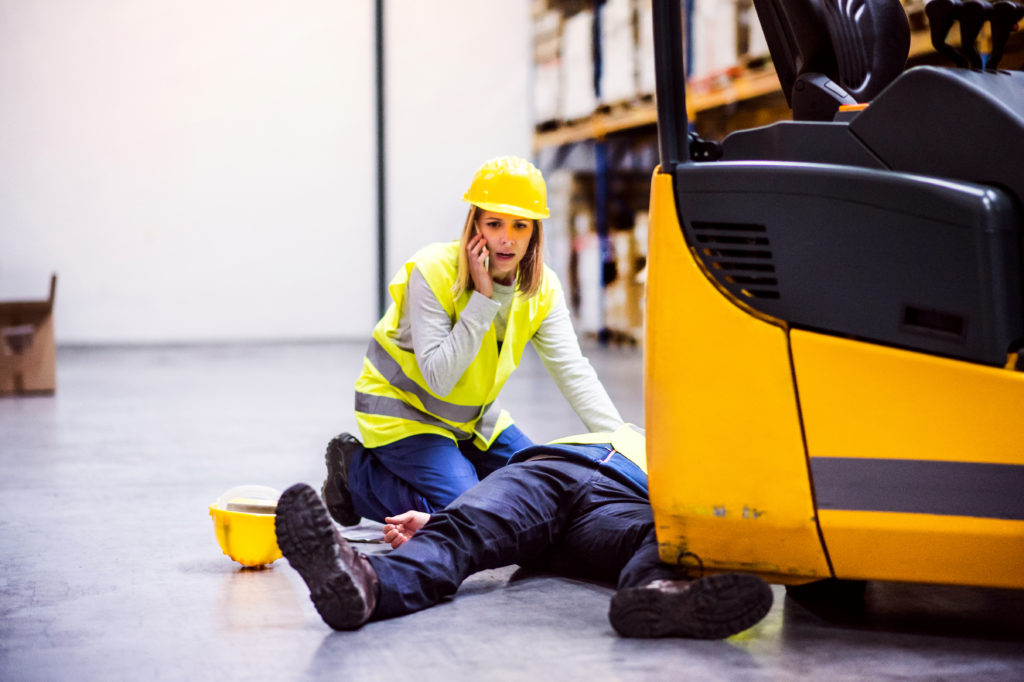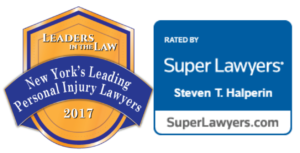How and Why Do Forklift Accidents Occur?
According to the Occupational Safety and Health Administration (OSHA), forklift accidents account for upwards of 34,000 serious injuries annually in the U.S., 80+ of which are fatalities. One reason forklift accidents are often more dangerous than accidents involving other types of workplace machinery is their size. While most forklifts are between 3,000-5,000 lbs, some weigh up to 9,000 lbs and are capable of inflicting serious injuries to operators, coworkers, and passersby when mishandled. In addition to fatalities, OSHA reports traumatic brain injuries, limb amputations, and paralysis to be among the most common injuries sustained by forklift operators. While each accident is unique, studies conducted by The National Institute for Occupational Safety and Health (NIOSH), a close partner of OSHA, have identified the most common types of forklift accidents to be:
- Forklift overturns
- Workers stuck, crushed, or pinned by forklifts
- Falls from forklifts
While forklift operators are typically in control when accidents occur, this does not mean they are at fault. Forklifts are expensive, complex pieces of machinery, and as such, multiple parties are typically responsible for ensuring their safe usage. This means that fault can extend to manufacturers, vendors, maintenance companies, and retailers, and their conduct is likewise regulated through a combination of federal, state, and local laws. In most cases, forklift accidents are preventable; however, when one or more parties are not compliant with regulatory standards, workers are put at a much higher risk of injury. According to the U.S. Department of Labor, some of the most important safety procedures for operators, owners, and servicers of forklifts are:
- Operator licensing and certification
- Pre-operation inspections (e.g., checking for proper fluid levels, tire conditions, warning decals, etc.)
- Operational inspections (e.g., testing brakes, steering, hoist and lowering control, etc.)
- Regular maintenance (i.e., the scheduled inspection/cleaning, repairing and replacing, of industrial powered trucks where necessary)
Legal Options for Victims of Forklift Accidents
How you should proceed after sustaining injuries in a forklift accident will depend on a variety of factors, including but not limited to, what parties were involved, who caused the accident, and where the accident occurred. Finding answers to these questions can take time, but they are crucial to any potential workers’ compensation claims or personal injury lawsuits filed on your behalf. After receiving medical attention, filing a report with your employer is one of the first things you should do after a forklift accident. Pursuant to the OSH Act of 1970 (29 USC §651; 29 CFR Parts 1900 to 2400), most employers are obligated to disclose workplace fatalities to OSHA within 8 hours of their occurrence/discovery and within 24 hours for all other serious injuries.
Personal Injury Lawsuits
Once a forklift accident has been properly documented, fault can be determined by assessing which parties, if any, failed to uphold part or all of their responsibility in ensuring the safety of the injured party. In law, this is called “duty of care,” and when this duty is breached, and injuries are sustained as a result, the injured party may be eligible to file a personal injury lawsuit against the breaching party for negligence. While there are some cases where employers with workers’ compensation insurance cannot be sued, anytime forklift accidents are the result of egregious or intentional misconduct, this exemption can be waived. Additionally, when the negligence of an employer or 3rd party is considered, many states, including New York, will consider if there was any comparative negligence on the part of the plaintiff. This refers to any mistakes or negligent conduct by the injured worker, which may have also contributed to the accident. Ultimately, in order to receive a settlement from a lawsuit pertaining to a forklift accident, there must be damages to justify monetary compensation. While damages can include all sorts of harm (physical, emotional, etc.), some of the most common types are:
- Past and future pain and suffering
- Past and future medical expenses and rehabilitation costs
- Past and future lost income.
- Loss of the injured party’s services claimed by their husband or wife.
- Loss of parental guidance claimed by the injured party’s children.
Workers’ Compensation Claims/Benefits
If filing a personal injury lawsuit is not a viable option, filing a claim for workers’ compensation may be the next best option. Through workers’ compensation, individuals who have been injured in a forklift accident may have the potential to recover cash benefits, medical benefits, disability benefits, and death benefits. While this option is sometimes preferred for its expediency, there are limits to how much can be recovered through workers’ compensation. Moreover, by seeking workers’ compensation benefits, you may be forced to waive certain rights, including the right to sue your employer and the right to choose your healthcare provider for treatments related to the accident. In addition to personal injury lawsuits and workers’ compensation claims, victims of forklift accidents may be eligible to seek damages through product liability lawsuits, wrongful death lawsuits, and other avenues of legal recourse. While there are some cases where two or more of these options can be pursued, this is dependent on state law and best discussed with an attorney.
Contact Us
At Halperin & Halperin P.C., we have over 40 years of experience representing victims of construction accidents, and our attorneys have successfully litigated even the most challenging of cases. Our firm takes pride in treating every prospective client like family, and if one of our attorneys cannot help you directly, we will assist you in finding someone who can. Call or email us today for a free consultation.

